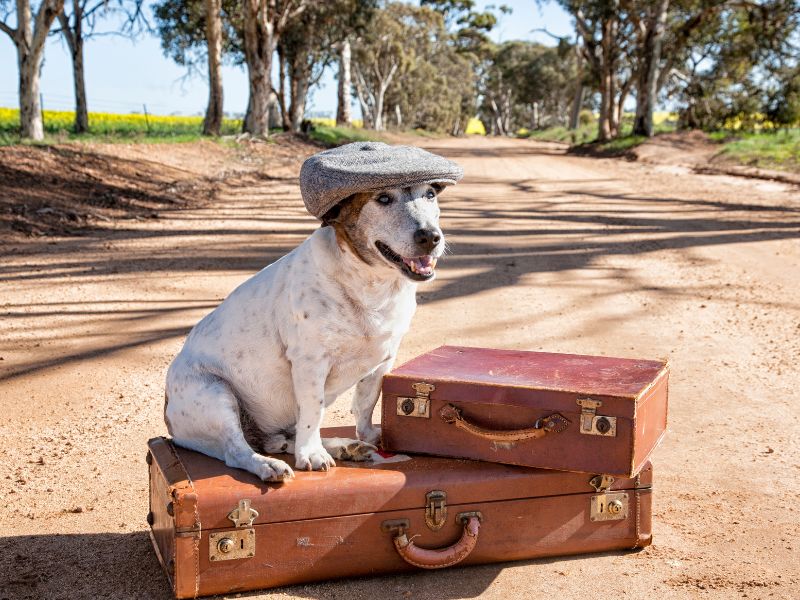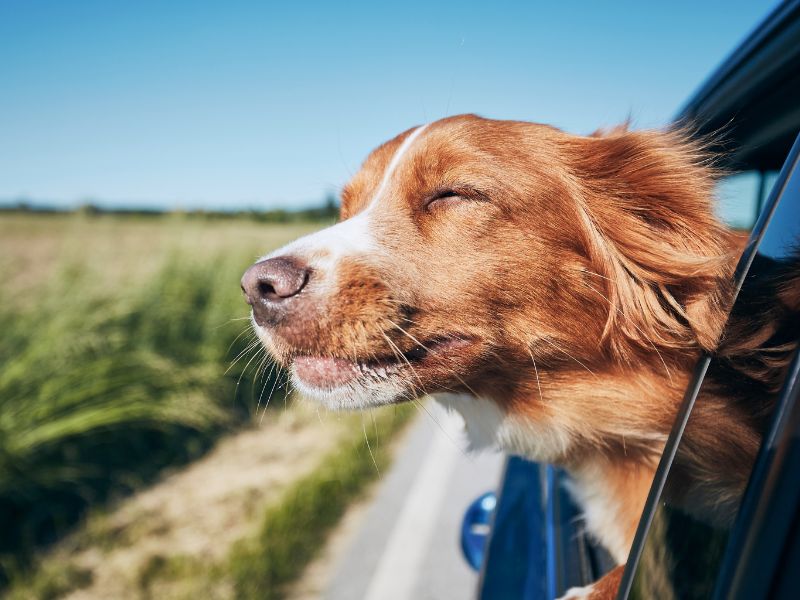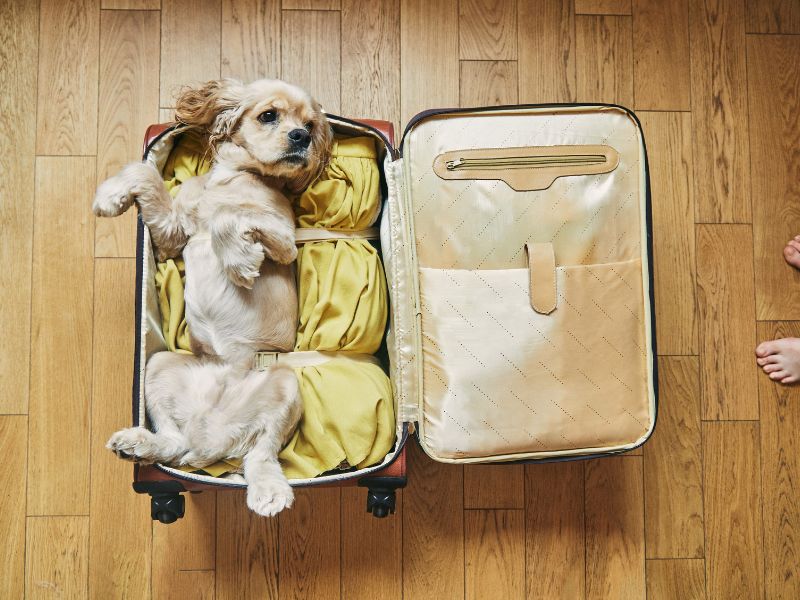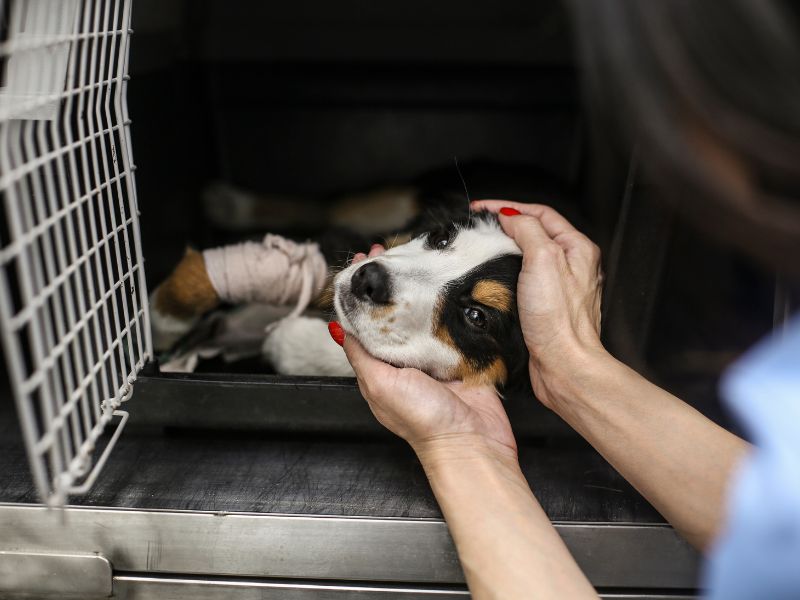Traveling with a dog can be a wonderful experience for you and your furry companion. It provides a chance to bond with your dog, explore new places, and create unforgettable memories. However, traveling with a dog requires planning and preparation to ensure that the trip is safe and enjoyable for everyone involved.
Before planning your trip, consider your dog’s personality, energy level, and health. Not all dogs are suited for travel; some may become stressed or uncomfortable in unfamiliar surroundings. So it’s important to assess whether your dog is up for the adventure and whether the trip is in their best interest.
This article will provide tips and guidelines to help you plan a successful trip with your dog. Following these guidelines and being prepared for the unexpected will give you and your dog a wonderful and safe trip. Whether exploring a new city, hiking in the mountains, or simply taking a road trip, traveling with your dog can be a fun and unforgettable experience.
Preparing Your Dog for Travel

Preparing your dog for travel is important in ensuring that your trip is safe and enjoyable for you and your furry companion. Here are some key steps to help you get started.
- Visit the veterinarian
Before traveling with your dog, schedule a check-up with your veterinarian. They can advise you on any necessary vaccinations or treatments and provide you with any necessary health certificates.
- Get your dog used to traveling
If your dog has never traveled before, it’s a good idea to take them on short car rides to help them get used to the experience. This can help reduce any anxiety they may have when traveling.
- Socialize your dog
If you’re planning on staying in pet-friendly accommodations, ensure your dog is comfortable around other animals and people. Taking them to the dog park or enrolling them in obedience training can help.
- Familiarize your dog with its travel gear
If you’re using a crate or dog seat belt, let your dog get used to it before the trip. This can help reduce their anxiety and make the experience more comfortable.
- Pack essentials for your dog
Make sure to bring along enough food, water, and any necessary medication for the duration of your trip. It’s also a good idea to bring along a familiar blanket or toy to help your dog feel more at home.
By following these tips, you can help prepare your dog for travel and ensure that the experience is enjoyable for both of you. Remember to always be patient and understanding of your dog’s needs and to take breaks during long trips to allow your
Choosing the Right Mode of Transportation
Choosing the right mode of transportation is an important part of traveling with a dog. Different modes of transportation offer different benefits and challenges, and it’s important to choose the one that’s right for you and your dog.

Below are some factors to consider when choosing the right mode of transportation:
- Driving
Driving is a great option for those who want to have control over the trip, bring along a lot of gear, or have a dog that gets car sick. Make sure to bring along a comfortable crate or dog seat belt to keep your dog secure while on the road.
- Flying
Flying is a good option for those who need to travel long distances or who want to save time. Make sure to check with the airline regarding their pet policy and requirements, and consider purchasing pet insurance to cover any unexpected health issues.
- Taking a train or bus
Taking a train or bus can be a good option for those who want to avoid the hassle of driving, but it may not be suitable for dogs that are nervous or uncomfortable in unfamiliar surroundings.
- Taking a boat
Taking a boat can be a great way to explore the waterways, but it requires extra preparation, such as life jackets for dogs and waterproof gear.
Ultimately, the mode of transportation you choose will depend on your destination, the length of the trip, and your dog’s personality and needs. By carefully considering all of these factors, you can choose the right mode of transportation for you and your furry companion.
Packing Essentials for Your Dog
Packing for your dog is an essential part of traveling with a dog. Having all the necessary items ensures that your dog is comfortable and well-cared for throughout the trip.

Here is a list of essentials to pack for your dog:
- Food and water
Bring enough food and water for the trip and bowls for feeding and drinking.
- Leash and collar
Ensure your dog wears a sturdy leash and collar with identification tags.
- Medications
Bring enough for the trip and a copy of their medical records if your dog takes any medication.
- First-aid kit
A first-aid kit for dogs should include items such as bandages, antiseptic, and tweezers.
- Bedding and toys
Bring a comfortable bed or blanket and a few toys to help keep your dog entertained.
- Waste bags
Make sure to bring enough waste bags to dispose of your dog’s waste while on the trip.
- Travel documents
If you’re traveling internationally, bring along any necessary travel documents, such as proof of vaccination.
Staying Safe During Your Trip
Staying safe while traveling with a dog is a top priority. Here are some tips for staying safe during your trip.
- Research your destination
Before you travel, research the area you’ll be visiting and make sure it’s pet-friendly. Some parks and attractions may have restrictions or prohibitions on dogs.
- Know the local laws
Familiarize yourself with local laws and regulations regarding dogs. Some cities have specific leash laws or restrictions on where dogs are allowed.
- Watch for potential hazards.
Be aware of potential hazards, such as hot pavement, toxic plants, and wildlife. Keep your dog close to you and under control at all times.
- Stay hydrated
Make sure your dog stays hydrated, especially in hot weather. Always bring along water and a bowl.
- Keep your dog visible.
If you’re traveling in an unfamiliar area, ensure your dog is easily visible, especially at night. Consider putting a reflective collar or light on your dog.
- Be prepared for emergencies.
Make sure you have a plan in case of an emergency, such as a lost dog or any sudden injury.
Finding Pet-Friendly Accommodations
Finding pet-friendly accommodations can be a challenge when traveling with a dog. Here are some tips for finding the perfect place to stay.

- Research pet-friendly options
Look for pet-friendly hotels, motels, B&Bs, or vacation rentals that allow dogs. Check the pet policy carefully and ensure no size or breed restrictions.
- Ask for recommendations
Ask friends, family, or other dog owners for recommendations on pet-friendly accommodations.
- Read reviews
Read reviews from other travelers who have taken their dogs to the same location. Pay attention to comments about the pet policy, cleanliness, and overall experience.
- Book in advance
Book your pet-friendly accommodation in advance to ensure availability and secure the best rate.
- Consider alternative options
If you’re having trouble finding pet-friendly accommodations, consider alternative options, such as camping or RVing.
By following these tips, you can find pet-friendly accommodations that are comfortable, safe, and affordable for you and your furry companion.
Tips for Keeping Your Dog Comfortable on the Road
- Ensure your dog has water access and takes regular breaks during travel.
- Bring a bed, blanket, or cushion for your dog to lie on during travel. Consider a crate or carrier for smaller dogs.
- Pack your dog’s favorite toys, chews, and treats to keep them entertained during the trip.
- If traveling by car, keep the windows open to allow fresh air to circulate.
- If traveling by plane, train, or bus, ensure your dog is familiar with the transportation you’ll be using.
- Maintain a routine as much as possible during your trip. This can include feeding and walking times.
What to Do in an Emergency Situation?
Before traveling with your dog, make sure you have a plan in case of an emergency. This should include a list of emergency vet clinics along your route, a pet first-aid kit, and any necessary medical records and medications.
- Be aware of symptoms
Know the signs of an emergency and what to do if your dog shows symptoms such as vomiting, diarrhea, or trouble breathing. Some common signs of a medical emergency in dogs include excessive panting, collapse, loss of consciousness, difficulty breathing, and excessive bleeding.
- Keep emergency contact information handy
Keep a list of emergency contacts with you, including your veterinarian’s phone number and the number for the nearest animal hospital.
- Have a backup plan
If you’re traveling alone, make sure someone knows your travel plans and can help in an emergency.
- Know how to perform first aid
Basic first-aid skills can help save your dog’s life in an emergency. Make sure you know how to perform CPR, stop bleeding, and handle other common emergencies.
- Keep calm
In an emergency, it’s important to stay calm and think clearly. This will help you make the best decisions for your dog and provide the necessary care quickly.
- Act quickly
If your dog is in immediate danger, don’t wait for professional help. Take action to save their life by performing first aid, calling for help, or transporting them to a veterinary clinic.
Dealing with Car Sickness in Dogs

Car sickness is a common issue for dogs when traveling, but there are steps you can take to help prevent and manage it:
- Start by taking short trips around the neighborhood and gradually increasing the duration and distance of the rides.
- Keep the car well-ventilated. For this, you can open windows or use air conditioning to help prevent your dog from feeling overheated and nauseous.
- Avoid feeding your dog before a trip. You can give your dog a light meal several hours before a trip and avoid giving them a heavy meal before traveling.
- You must keep your dog secure. You can use a safety harness or crate to secure your dog and prevent them from moving around too much in the car.
- Offer your dog toys or chews to help distract them and reduce their anxiety.
- Talk to your veterinarian about using an anti-nausea medication, such as Dramamine, to help prevent car sickness.
- Bring along cleaning supplies and extra towels in case of accidents.
Making the Most of Your Trip with Your Furry Companion
- Plan fun activities
Look for pet-friendly attractions, parks, and beaches where you and your dog can have fun and explore together.
- Take regular breaks
Regular breaks for exercise and potty breaks can help keep your dog comfortable and relaxed during the trip.
- Keep your dog hydrated.
Bring plenty of water and a portable water bowl to ensure your dog stays hydrated.
- Maintain your dog’s routine.
Stick to your dog’s normal feeding and exercise schedule as much as possible to minimize stress and discomfort.
- Respect local laws and regulations.
Ensure you’re familiar with local pet regulations and laws, such as leash laws and waste disposal requirements.
- Stay organized
Keep all your dog’s essentials, such as food, toys, and medications, organized and easily accessible.
- Have fun
Most importantly, have fun and enjoy your time with your furry companion. Take plenty of photos, play together, and make memories that will last a lifetime.
Conclusion
Traveling with a dog can be a fun and rewarding experience, but it’s important to be prepared. Following the tips outlined in this guide ensures that your furry companion is comfortable, safe, and happy throughout the journey.
From preparing your dog for travel to finding pet-friendly accommodations and dealing with emergencies, it’s important to be proactive and have a plan in place. You’ll create lasting memories and strengthen your bond by making the most of your trip with your furry companion. So pack your bags, grab your leash, and hit the road with your four-legged friend – the adventure awaits!
